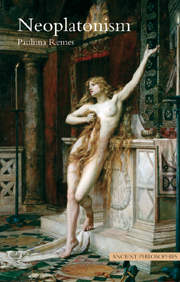Book contents
- Frontmatter
- Contents
- Preface
- Acknowledgements
- 1 Introduction
- 2 The first principles and the metaphysical hierarchy
- 3 Nature and the sensible universe
- 4 Human being and the self
- 5 Epistemology and philosophical psychology
- 6 Ethics and politics
- 7 The Neoplatonic legacy
- Glossary of terms
- Guide to further reading
- References
- Index of passages
- Index
3 - Nature and the sensible universe
- Frontmatter
- Contents
- Preface
- Acknowledgements
- 1 Introduction
- 2 The first principles and the metaphysical hierarchy
- 3 Nature and the sensible universe
- 4 Human being and the self
- 5 Epistemology and philosophical psychology
- 6 Ethics and politics
- 7 The Neoplatonic legacy
- Glossary of terms
- Guide to further reading
- References
- Index of passages
- Index
Summary
Hitherto, the entities and things within the sensible realm – the world we perceive and live in – have received limited attention. It is now high time to turn to the part of the metaphysics that directly explains the realm in which human beings live and act. What is the physical universe like, what are its basic structures and what status does it enjoy in the hierarchy of things? This means also explicating the main point of discord between the Neoplatonists and the archetypal philosopher of the perceived and lived world, Aristotle. For Aristotle, the perceived world and its entities are basic. For the Neoplatonists, they are derivative.
Conceptions of nature
Ancient philosophy of nature (phusis) is a study of not only physical things but also the metaphysical entities and doctrines that most directly condition the study of natural things. Hence, for instance, philosophy of time, regardless of our expectations, falls within this study. Neoplatonist natural philosophy rests on an intellectual background that is partly Aristotelian and partly Platonic. First, Neoplatonists build on and react to the Aristotelian idea of nature and the soul's role in it. Nature refers to the forms of the sensibles that exist by nature, as distinct, for instance, from artefacts. These are things that change naturally, that is, that have an internal principle of change and stability in them, as opposed to whatever needs to be changed from outside, externally (Arist. Ph. 2.3, 192b13–14, 20–23; Metaph. Δ 4, 1014b16–1015a19).
- Type
- Chapter
- Information
- Neoplatonism , pp. 77 - 98Publisher: Acumen PublishingPrint publication year: 2008



